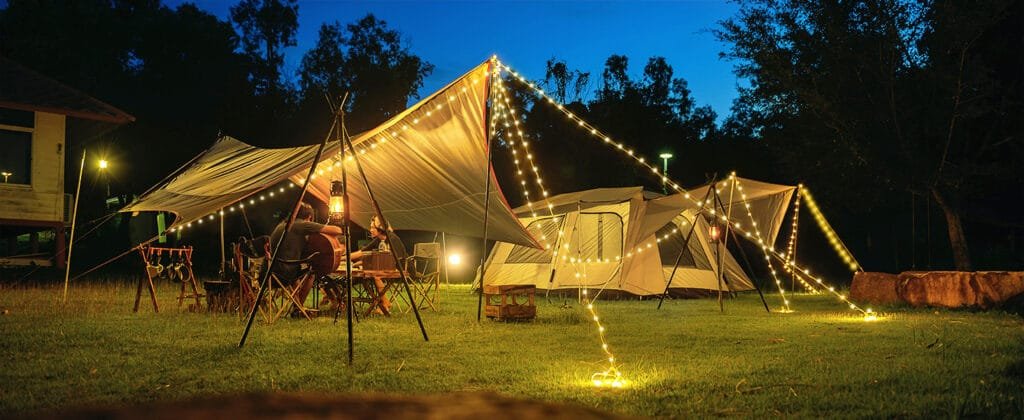LED lights are popular for their energy efficiency, but when only half of the string works, it can be frustrating. A single faulty bulb, broken wire, or loose connection may cause the problem. In this article, we’ll walk you through the common reasons for half a string of LED lights not working and how to fix it.

If half of your LED lights are not working, it usually means there’s a broken connection. Often, this is due to a faulty bulb, a broken wire, or an improperly seated bulb. Because most LED light strings are wired in parallel, one malfunctioning bulb can cause a section of the string to go dark. Fixing this typically requires locating the problem bulb or repairing the connection.
Now that we’ve covered the basics, let’s dive into some common causes of this issue and how you can easily troubleshoot and fix your LED lights to get them shining again.
Why is half of my LED light string not working?
One of the most common reasons why half of your LED string doesn’t work is a faulty bulb. If a bulb in the series goes out, it can break the electrical flow, causing an entire section to stop lighting up. Sometimes, it’s a simple fix like replacing a dead bulb or making sure it’s properly seated in the socket.
LED lights often work in a series, meaning when one light in that series fails, the whole chain is affected. This is particularly common with Christmas lights or decorative string lights, where multiple bulbs are connected in a row. If you suspect this is the cause, try replacing each bulb in the unlit section to see if the problem resolves itself.
Why does only half of my LEDs work?
If your power supply is functioning well, but half of the lights are still out, the problem may be in the connection. If the LED strip is damaged or the solderless connectors are not making a solid connection, the current can’t flow properly, resulting in half of the lights not working. Checking and replacing the connectors can resolve this issue.
Ensure all connectors are tightly secured and there are no visible gaps in the circuit. If the string is older, it’s also possible that corrosion or wear has weakened the connection, which will need repairing.
Why is a section of my LED lights not working?
A specific section of LED lights may fail due to a poor connection or a manufacturing defect. Inspecting the wires for breaks or the strip for visible damage is essential. Physical damage, such as pinched wires, can also cause certain sections to malfunction.
If the problem is isolated to a particular section, it could be due to a loose or corroded connection. Sometimes, when the wires are bent or pulled too tightly, they break or cause the lights to flicker or stop working altogether. In these cases, you may need to re-solder or reconnect the wiring.
Why does only half of my string of lights work?
If half of your string is working but the other half isn’t, a loose or poorly seated bulb is usually to blame. You can swap out bulbs one at a time to locate the faulty one, or inspect the wiring to check for any breaks in the connection.
When troubleshooting, be sure to check both the bulbs and the wiring. If the bulb is secure, but half the string still doesn’t light up, it’s likely a wiring issue. This could mean a bad wire or poor contact between sections of the string.
Why does only half of my string of lights work?
If half of your string is working but the other half isn’t, a loose or poorly seated bulb is usually to blame. You can swap out bulbs one at a time to locate the faulty one, or inspect the wiring to check for any breaks in the connection.
When troubleshooting, be sure to check both the bulbs and the wiring. If the bulb is secure, but half the string still doesn’t light up, it’s likely a wiring issue. This could mean a bad wire or poor contact between sections of the string.
Outdoor LED string lights stopped working: What now?
Outdoor LED string lights are exposed to the elements, which can cause issues such as corroded connections or weather-related damage. Inspect the power source, connectors, and bulbs for any visible wear or damage. You might also want to check the fuse in the plug.
Outdoor lights often experience issues from moisture or dirt entering the wiring. If the lights stopped working after exposure to bad weather, the connectors may have corroded. Disconnect the lights and inspect the plug, wiring, and any exposed components for water damage.
LED Keeper: How it can help fix LED lights?
An LED Keeper is a specialized tool designed for troubleshooting and fixing LED strings. It helps you identify the faulty bulb or section and safely test connections without risking damage to the lights.
This tool is especially useful when you can’t easily locate the malfunctioning bulb or when troubleshooting a large section of lights. It works by allowing you to pinpoint where the electrical flow is being interrupted.
LED Keeper: How it can help fix LED lights?
An LED Keeper is a specialized tool designed for troubleshooting and fixing LED strings. It helps you identify the faulty bulb or section and safely test connections without risking damage to the lights.
This tool is especially useful when you can’t easily locate the malfunctioning bulb or when troubleshooting a large section of lights. It works by allowing you to pinpoint where the electrical flow is being interrupted.
Conclusion
In conclusion, a half-lit LED string is usually caused by a faulty bulb, poor connection, or damaged wire. With proper troubleshooting techniques and tools like the LED Keeper, you can quickly fix the problem and restore your lights to full brightness. Always inspect each section carefully to pinpoint the issue. If you’re unsure, a professional repair service can assist with more complex wiring issues.
